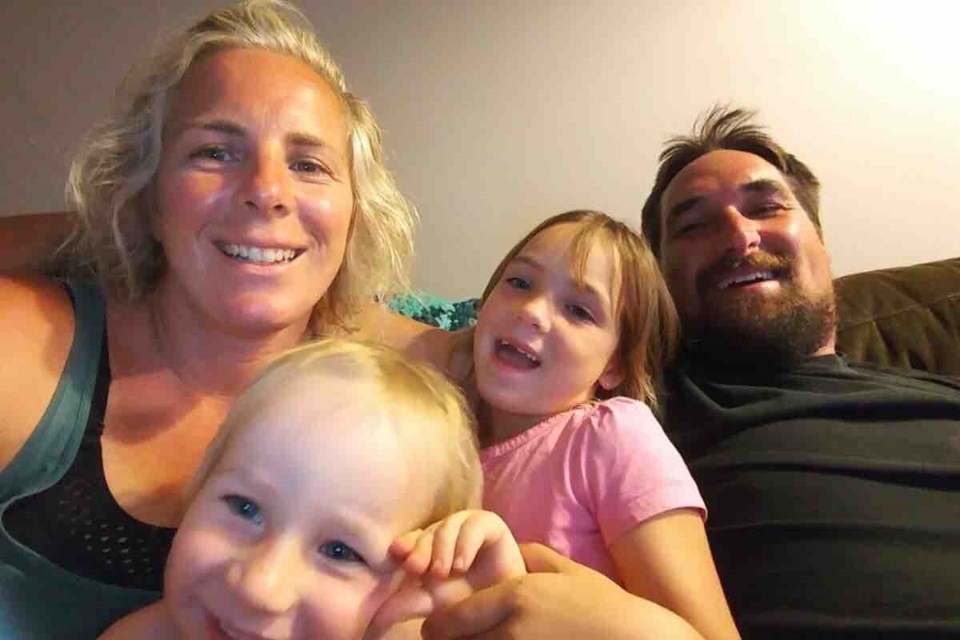Editor's note: The following story contains descriptions heard at the inquest that could be upsetting for some readers.
A worker at the Oro-Medonte mining site where a colleague was killed four years ago described at a coroner’s inquest Monday how a stone crusher unexpectedly shifted, trapping his colleague who was standing right next to him.
Michael Pridham, a 35-year-old father of two, died in hospital Dec. 21, 2018 after he was injured while dismantling the aging stone/gravel impact crusher so that it could be moved and taken to auction. He was taken to Soldiers’ Memorial Hospital in Orillia where he was pronounced dead.
The coroner’s counsel, Jennifer Armenise, told the six-member jury at the Four Points Sheraton conference room on Bryne Drive in Barrie that the crusher and its stackers, or conveyers placed under the crusher, will be a major focus during the inquest.
Reading from an agreed statement of facts, Armenoise said Pridham died from a blunt-force injury to the head, which resulted in skull fractures and severe brain injury. There was also bleeding in the pharynx and lungs.
Inquests in construction site deaths are mandatory in Ontario. They are convened to help prevent similar deaths.
Mike Baker was working as a heavy equipment mechanic apprentice for King-based Priestly Demolition at the large open gravel pit. He said the task that morning, following a safety meeting, was to fold up the two stackers, clean them off and get the equipment ready for transport.
Referring to pictures of the equipment also presented to jury members, Baker explained that one person was at the top of the stone crusher using a hand crank and another was located at a mini-excavator while he and Pridham, the site supervisor, stood about six feet away.
The jury heard the crusher was an older piece of equipment; many others are powered by automated cranks.
“We were focusing on getting this conveyor folded up,” he said.
They had agreed on the method they would use and moved two pins on top to fold up the conveyer to fit on the chassis.
“Everything was going just as we had planned," Baker said.
But, he added, the right side unexpectedly shifted and a cable was a bit looser on one side, so Pridham stepped forward to give it a nudge.
“He didn’t even have his hand on it and it came down,” recalled Baker. “As it folded up on itself, it kept on working its way up his back” and toward his head.
“I dropped to my knees trying to get the conveyer off Mike’s head," he added.
The workers tried to free Pridham using the excavator to lift the conveyor while 911 was alerted.
Emergency crews were there within six minutes, Baker said.
James Milne, a mining inspector with the Ministry of Labour, Immigration, Training and Skills Development of Ontario, was called later that day to start an investigation into the workplace death.
Five of the photos Milne took that day of the scene were used to help guide the jury through the site and the large piece of equipment that was being prepared for shipping.
One image shows the large rock crusher fitted with a hopper on top where the rocks go in to be crushed and then dropped onto a conveyor system below. Another picture shows the discharge conveyor below the crusher, which usually pivots in the middle and folds back on the crusher to be towed.
Milne said he had previously attended the site during a routine or proactive inspection and met Pridham, describing him as knowledgeable and co-operative.
“He was an experienced gentleman,” Milne said.
The investigation was later deemed to be a construction accident, not a mining accident. There were no charges levied in connection to Pridham's death.
The third witness, Andrew Carter, a regional program co-ordinator for the labour ministry, provided an overview of Ontario’s Occupational Health and Safety Act, its history and indicated everyone in the workplace has a role to play.
Carter estimated the age of the crusher to be about 30 years old and said there was no manual on site, although Pridham had experience with the equipment. A risk assessment of the job had been conducted, he said.
The inquest will continue Tuesday with a fourth witness, an engineer who is expected to walk the jury through the technical aspects of the crusher and what likely happened that day.
Jury members will then be asked to deliberate and consider recommendations to help prevent similar deaths.
Members of the Pridham family were not in attendance and did not have a lawyer present. There were lawyers for the Ontario government and the employer.



